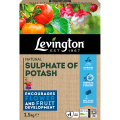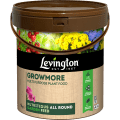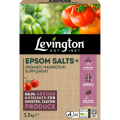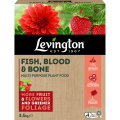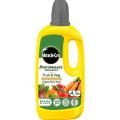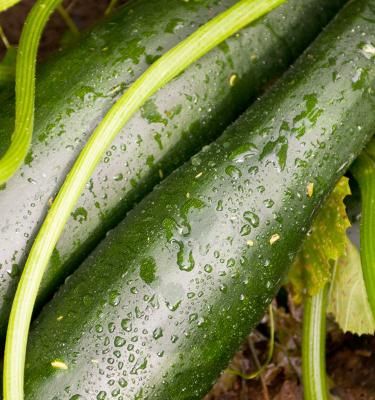

How to plant, grow and care for courgettes
Courgettes are a common summer staple in the vegetable garden and are relatively easy to grow. They taste great in salads, lightly steamed, stuffed or roasted. Courgettes and marrows are the same thing – although courgettes plants are bred to be a much bushier and to produce lots of small, tasty fruit.
Courgette varieties
Courgettes come in many shapes and sizes, as well as the traditional long green one's, courgettes can be yellow, stripy, round and nearly black.
Different varieties to try include:
- Sunburst- (yellow)
- Eight ball (round)
- Tondo chiaro di Nizza (round and speckled)
- Green Tiger F1 (Striped)
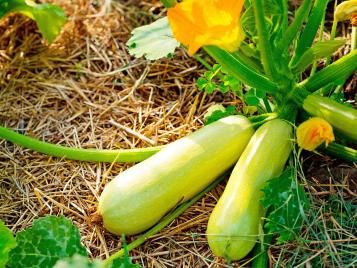
What you’ll need to start growing courgettes
For indoor sowing:
- 9cm (3.5in) pots
- Peat free seed sowing compost
- Propagator or warm windowsill
- Courgette seeds
For outdoor planting:
- Spade or trowel
- Farmyard manure - Levington® Peat Free Farmyard Manure
- Watering can
- Plant Food - Miracle-Gro Performance Organics Fruit & Veg Concentrated Liquid Plant Food
Cultivating courgettes
Courgettes need a sheltered position in full sun and a fertile soil that holds plenty of moisture. They are reasonably large plants, so need plenty of room, spacing them up to 90cm (3ft) apart. Some more compact varieties are also available - and these are best suited for growing in containers.
Courgettes are hungry plants so when planting outside add some well rotted farmyard manure to the planting area about two weeks before planting. Leave a low mound of the soil and manure at the top and then in two weeks you can plant your courgette into this mound.
As courgettes need plenty of water, a top tip is to sink a 15cm (6in) pot alongside them when planting out. Watering into the pot ensures the water goes down to the roots and doesn't sit around the neck of the plant, which can lead to rotting. It also keeps it off the foliage, which helps reduce problems with powdery mildew.
How to grow courgettes from seed
For the best results, sow the courgette seeds indoors from mid to late April 13mm (½in) deep individually in 7-9cm (3-3½in) pots filled with peat free compost.
Sow the seed on its side as this helps prevent water pooling on the top. Place the pots in a propagator or other warm place at 18-21°C (65-70°F) and as soon as the seeds germinate, take any cover off. Harden off the young plants for 7-10 days before planting outside in late May/early June after the last frosts have passed.
Outside, sow 2 or 3 seeds 2.5cm (1in) deep in weed free, fertile soil, in late May or early June and cover with a cloche. Thin the young seedlings to leave just the strongest one.
How to care for courgette plants
As the young courgette plants are susceptible to frost and cold weather, cover them with fleece or a cloche if the weather turns cold early in the growing season
Feed around the base of the plant with a granular all-purpose plant food like Miracle-Gro® Performance Organics Fruit & Veg Granular Plant Food as they start to grow. And keep the plant well watered, making sure to water around the base not the leaves, water deeply every few days rather than little and often. Once the first fruit starts to swell, feed every 10-14 days with a high potassium feed, to encourage tasty fruits.
Can you grow courgettes in pots?
Some courgettes grow well in containers, but they will be a bit higher maintenance. Choose the largest container you can and fill with a good peat free compost such as Miracle-Gro® Peat Free Premium Fruit & Vegetable Compost with Organic Plant Food. Don’t allow the compost to dry out, mulching with something like Levington® Composted Bark around the stem once it starts to grow will help retain moisture. Start feeding with liquid plant food about 3 weeks after planting and as soon as you see flowers appearing.
Good varieties for containers include “Midnight” and ‘Sure Thing’.
Harvesting courgettes
Courgettes are best Harvested when they are fairly small, about 10-12.5cm (4-5in) long. Regular picking when they are small not only ensures a longer cropping period over several months, but the fruits have much more flavour when picked early. Courgette fruits can seem to grow large overnight, so keep checking under leaves and behind the plant so you don’t miss any.
Some courgette leaves can be quite prickly so wear gloves and long sleeves when harvesting. If you want a few marrows then let them grow on, but they will be watery.
Courgettes produce large crops, so one or two plants is all that’s needed to feed a large family.
Common pests, diseases and problems of courgette plants
Powdery mildew
Powdery mildew on courgettes can be a common problem. This is a fungal disease that appears as a white powdery deposit on the leaves, stunting growth and causing leaves to shrivel. Drought-stressed plants are more susceptible.
- Dig organic material into the soil before planting to improve soil water retention.
- Space plants when planting to ensure good air circulation.
- Remove any affected growth promptly.
- Water regularly in dry periods and try not to get the leaves wet.
Yellow courgette leaves
Older courgette leaves often turn yellow and drop off the plant. This is not a cause for concern as they will be replaced by new growth, but also see Cucumber mosaic virus.
If younger leaves are turning yellow then this could be a sign that they need supplementary feeding with a balanced feed.
Cucumber mosaic virus
Courgette leaves turning yellow can also be due to cucumber mosaic virus. This causes deformed, stunted leaves with a characteristic ‘mosaic’ yellow patterning. Affected plants produce few or no flowers, and any fruit that develop are small and inedible.
- Remove and destroy affected plants promptly.
- Wash hands and tools after handling affected plants.
- Plant disease-resistant varieties.
- No chemical controls are available.
Grey mould/botrytis mould
Grey mould is a fungal disease that appears as powdery grey mould at the stalk of courgette, gradually covering the whole fruit, which then rots.
- Remove any dead leaves or flowers.
- Remove any affected fruit promptly.
- Space plants well when planting to allow good air circulation.
- There are no chemical controls available for grey mould.
Courgettes rotting when small or not setting
Courgette fruits can appear to start swelling but then rot or drop off the plant while still small. This occurs when the flowers are not pollinated, and is usually more of a problem early in the season, especially if it has been cold and wet. If the problem persists, you can hand-pollinate flowers using a small paintbrush.
Slugs and snails
Slugs and snails will eat the leaves of young courgette plants, and can be identified by the slime trails that they leave, as well as the damage they do.
- Check plants at night and remove slugs and snails by hand.
- Covering the soil around plants with crushed eggshells or a grit barrier.
- Scatter environmentally-friendly slug pellets if other methods are not sufficient.
Key features of courgettes
| Flowering season(s) | Summer, Autumn |
|---|---|
| Foliage season(s) | Spring, Summer, Autumn |
| Sunlight | Full sun |
| Soil type | Chalky, Clay, Loamy, Sandy |
| Soil pH | Neutral |
| Soil moisture | Moist but well-drained, Poorly drained |
| Ultimate height | Up to 30cm (1ft) |
| Ultimate spread | Up to 3m (10ft) |
| Time to ultimate height | 4 months |
| When to plant | May and June |
